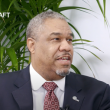Digital transformation in financial services: how to plan your spend for maximum impact
Every financial institution is prioritising digital transformation as an essential part of their strategy. The challenge is which areas to change first.
Digital transformation can involve a multitude of projects and outcomes. For example, it can improve process automation, form digitisation, data collection, customer journeys and product and service offerings.
All these projects involve introducing or improving technology and working methods to deliver the change.
Decisions around which to prioritise require a deep understanding of your unique value proposition and overall strategy; and what your competitors are doing or might do. They also need a clear view of your budget for the next few cycles, and your longer-term investment plans, so you can scope the size of your transformation.
The strategic transformation dilemma
We at Delta Capita often see another dilemma among our clients – whether to go for quick wins versus longer-term strategic transformation.
Strategic design and build are always the preference and viewed as much better than something that sounds “tactical” – a word stakeholders often associate with wasted effort.
However, strategic transformation does not deliver instant results and, with the pace of change and competition in the industry, senior stakeholders want to see a structured roadmap that achieves the end vision while making incremental steps.
So how do you balance measurable return on investment (ROI) and long-term results?
Here are the five biggest things you need to get right when prioritising digital spend, from our digital transformation team’s experience helping clients in this area:
1. Start with the customer
Understand why you are transforming. Get a clear view of what problems you are solving and for whom. This will drive your spending allocation and benefits tracking.
2. Look beyond the customer
Companies often think digital transformation is only for customer-facing improvements such as around your user interface and delivering an omnichannel experience. But you can often find dramatic benefits in your internal operations too.
Don’t forget the experience for your internal team and the knock-on impact this will have on customer experience.
Also, the war for talent in financial services is increasingly fierce. You need your best talent working on highly challenging, differentiating work – not monotonous activities that you could automate.
3. Conduct a thorough discovery and target operating model before you begin
This should incorporate an assessment of your current state.
Imagine planning a transformation then encountering, in week 12, fundamental limits around your legacy technology or a pressing regulatory deadline that prevents delivery of critical items.
Invest time upfront in uncovering the elephants in the room and having the difficult conversations with a carefully defined stakeholder group. This will reap rewards long-term.
4. Create and use a RACI model
Digital transformation programmes can touch almost every element of an organisation. A RACI model helps clarify who you need to engage with, and in what capacity. Not having a RACI can lead to unnecessary friction in an already challenging change project.
5. Benefits tracking
ROI, benefits tracking, key performance indicators (KPI) and objectives and key results (OKR) – there are many ways to track outcomes and they all have merits. But organisations often struggle to connect the goals of the transformation, board-level milestones, and team backlogs.
For example, if the board is working to milestones in a linear waterfall method, but the project teams delivering the work are working in an agile, backlog-oriented way, that will create a disconnect.
It is essential to align working methods across the whole organisation. Doing this correctly creates a bird’s eye view for senior management. This connects the high-level status with the granular backlog items, providing full transparency on progress.
Simplifying digital transformation
Deciding how to prioritise spending and resources in your digital transformation is not easy. But using these five actions as a guideline will help you simplify the decisions.
Start by investing time in understanding your purpose from a customer and internal standpoint; identify any blockers early; and agree who needs to be involved, and how you’ll track success.
This will lead to a strategic roadmap of transformation that incorporates quick wins and achieves your end vision with buy-in and support from the whole organisation.
Delta Capita can help
You may be midway through your digital transformation and need help prioritising projects and delivering against your goals such as cost reduction or elevating your customer journeys. Or you might be starting off and need to understand your capability mapping and create your roadmap. Either way, Delta Capita can help you achieve your goals. With over 1,300 consultants globally across EMEA, US and Asia. We work with you to truly understand your unique needs and problem areas and advise how to solve them in the right way whether through consulting advisory, staff augmentation, managed services or technology.
We have a unique blend of both fungible change consultants and digital, data and agile consultants in addition to genuine industry SME’s. We then blend these skillsets with industry-leading tooling and accelerators to deliver quickly and cost effectively for our clients.
Want to hear more or run a specific idea or problem past us? Then get in touch today!
By Sarah Carver, head of digital, Delta Capita
About the author
 Sarah Carver is an expert in digital transformation and change. She joined Delta Capita in 2020, a global consulting and managed services provider with a mission to reinvent the financial services value chain. Here, she leads the digital practice globally, building upon her professional background in strategy and business development.
Sarah Carver is an expert in digital transformation and change. She joined Delta Capita in 2020, a global consulting and managed services provider with a mission to reinvent the financial services value chain. Here, she leads the digital practice globally, building upon her professional background in strategy and business development.
Aside from her core role, she has a strong focus on creating and maintaining culture, inclusion and diversity and has featured in the book Women of Fintech, Walk the Talk based on the podcast series.
Before joining Delta Capita, Sarah started her career at a gas company before moving to Accenture. She later worked at the London stock exchange, before working with the Bank of America in the US, UK and Ireland. When she joined Capco she initially worked at Deutsche Bank on a large-scale change programme, before leading a large digital transformation project for a retail bank, reshaping financial products around life events.










































